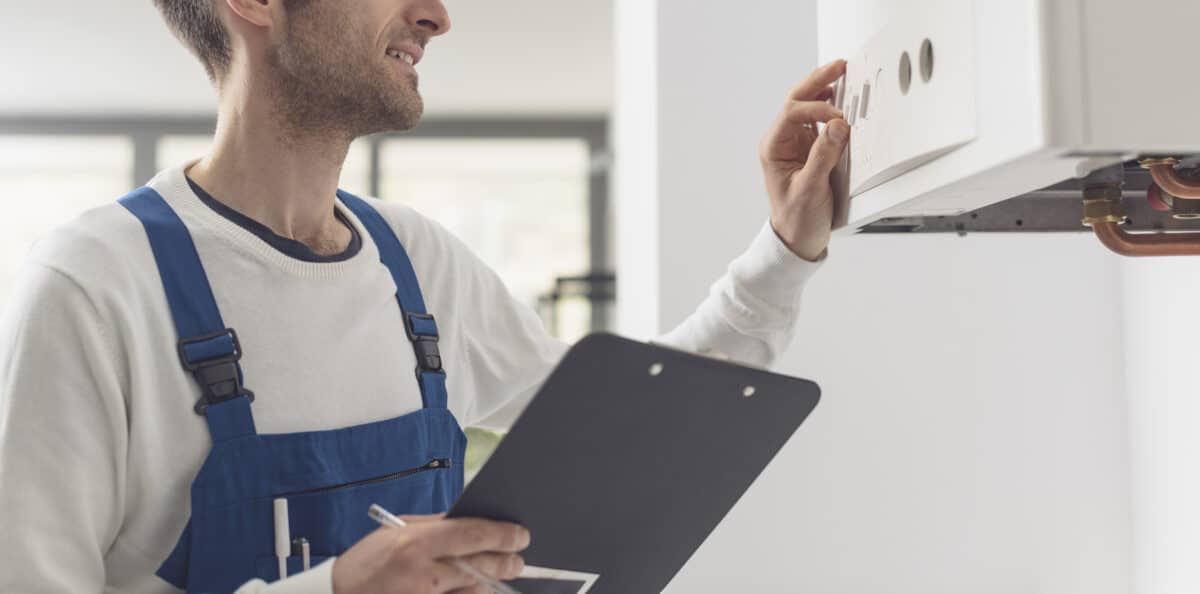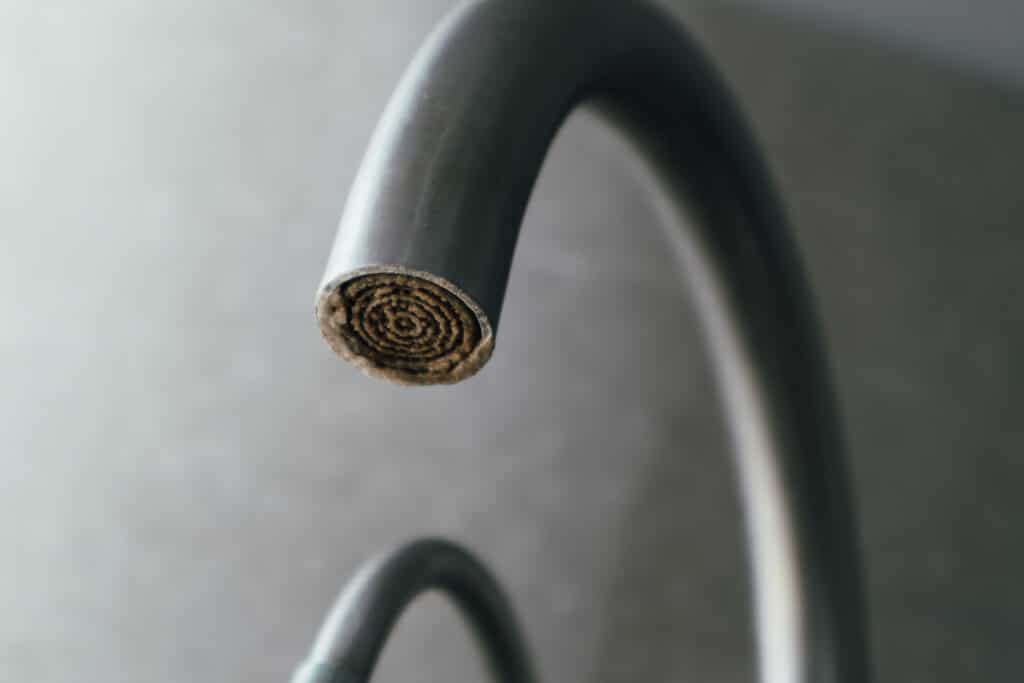Essential Desert Plumbing Maintenance Tips

- Unique Desert Challenges: Plumbing in desert areas like Kingman, AZ, requires special attention due to extreme temperatures, dry conditions, and hard water.
- Monthly Checks: Inspect for leaks, test water pressure, check water heaters, and examine exposed pipes regularly to catch issues early.
- Seasonal Maintenance: Insulate pipes during winter and inspect irrigation systems in summer. Use alternatives to chemical cleaners and prevent sand-induced clogs.
- Hard Water Management: Install a water softener, clean fixtures regularly, and flush appliances to prevent mineral buildup.
- Outdoor Plumbing Care: Inspect sprinklers, winterize faucets, and store hoses properly to extend their lifespan and efficiency.
Are you aware of the unique challenges your plumbing faces in a desert climate like Kingman, AZ?
Regular plumbing maintenance is crucial in such environments to prevent costly repairs and ensure a reliable water supply. In the desert, extreme temperatures and dry conditions can take a toll on your plumbing system. Understanding how to properly maintain your pipes and fixtures can save you time and money.
Regular inspections and preventive measures can significantly extend the lifespan of your plumbing system. Simple tasks like checking for leaks, insulating pipes, and maintaining water heaters can make a big difference. By taking proactive steps, you can avoid emergency plumbing situations and enjoy peace of mind knowing your home is well-protected.

Photo from iStock – Credit: welcomia
Plumbing Maintenance: Understanding Your Home’s System
Overview of Main Plumbing Components
Knowing your plumbing system is the first step to effective plumbing maintenance. The primary components include:
- Pipes: These carry water to and from your home. Materials like copper, PVC, and PEX are commonly used.
- Fixtures: Faucets, sinks, showers, and toilets are part of your daily water usage.
- Water Heater: This heats the water for your home. Regular plumbing maintenance ensures its efficiency.
- Sewer Line: This carries wastewater away. Keeping it clear is crucial for home hygiene.
How Desert Conditions Affect Plumbing
Desert climates pose unique challenges to plumbing systems. The extreme heat causes pipes to expand and contract, leading to potential leaks or bursts. The dry air can also dry out seals and gaskets, causing them to fail.
Moreover, hard water is a common issue in desert areas. The high mineral content can lead to scale buildup in pipes and fixtures, reducing water flow and efficiency. Installing a water softener can help mitigate these effects, but regular cleaning and plumbing maintenance are still necessary.
Understanding these components and challenges helps in planning an effective plumbing maintenance routine for your desert home.
Monthly Plumbing Maintenance Checklist
Inspect for Leaks
Regularly checking for leaks can prevent minor issues from becoming major problems. Here’s what to look for:
- Faucets and Showerheads: Look for drips and tighten any loose parts.
- Under Sinks: Check for moisture or water stains.
- Toilets: Listen for running water and inspect the base for leaks.
- Pipes: Look for damp spots on walls or ceilings.
Test Water Pressure
Maintaining proper water pressure is crucial. Low pressure can indicate a leak or buildup in pipes, while high pressure can cause damage over time. Here’s how to test it:
- Pressure Gauge: Attach a gauge to an outdoor spigot to get a reading.
- Ideal Range: Ensure the pressure is between 40-60 psi.
- Adjust Regulator: If pressure is too high, adjust the pressure regulator or consult a plumber.
Check Water Heater
Monthly water heater maintenance ensures it runs efficiently:
- Temperature Setting: Ensure it’s set to 120°F to prevent scalding and save energy.
- Check for Leaks: Inspect the area around the heater for moisture.
- Drain Sediment: Drain a few gallons of water to remove sediment buildup, improving efficiency and lifespan.
Inspect Exposed Pipes
Look for any visible signs of wear, corrosion, or leaks on exposed pipes in basements, crawl spaces, and utility rooms. Catching issues early can prevent costly repairs.
By incorporating these tasks into your monthly routine, you can keep your plumbing system in top shape and avoid unexpected problems.
Seasonal Plumbing Maintenance Tips for Desert Homes
Winterizing Pipes
Although winters in Kingman, AZ, are mild, sudden cold snaps can cause significant damage to unprotected plumbing. Proper winterization helps prevent pipes from freezing and bursting. Here’s how to prepare your pipes for winter:
- Insulate Pipes: Use pipe insulation on exposed pipes in unheated areas, like garages and crawl spaces.
- Seal Gaps: Close gaps around windows and doors to keep cold air from reaching pipes.
- Outdoor Faucets: Disconnect garden hoses and install insulated covers on outdoor faucets to prevent freezing.
Summer Plumbing Maintenance Essentials
Summer heat can be just as challenging for your plumbing system as winter cold. High temperatures can exacerbate existing issues and lead to new problems. Keep your system running smoothly with these summer tips:
- Check for Leaks: Inspect all plumbing fixtures and pipes for leaks, which can be more frequent in hot weather.
- Inspect Sprinklers: Ensure your irrigation system is working correctly, as leaks or misaligned heads can waste water and affect your landscaping.
- Service the Water Heater: Hot weather can strain your water heater, so ensure it’s in good working condition by flushing it and checking the thermostat.
Preventing Clogs in Desert Environments
In desert areas, dust and sand can enter your plumbing system, leading to clogs. Prevention is key to avoiding these issues. Here are some effective methods:
- Use Drain Screens: Install screens over drains to catch hair, soap scum, and debris.
- Avoid Pouring Grease: Never pour grease down the drain; it can solidify and cause blockages.
- Flush Drains Regularly: Use a mixture of hot water, vinegar, and baking soda to keep drains clear.
Safe Alternatives to Chemical Drain Cleaners
Chemical drain cleaners can damage pipes and harm the environment. Here are safer alternatives for maintaining clear drains:
- Baking Soda and Vinegar: Pour half a cup of baking soda followed by half a cup of vinegar down the drain. Let it sit for 15 minutes, then flush with hot water.
- Enzyme Cleaners: Use enzyme-based drain cleaners that break down organic material without harming pipes.
- Plunger or Drain Snake: Use these tools to physically remove clogs without chemicals.
Implementing these seasonal tips can keep your plumbing system in optimal condition throughout the year.

Photo from iStock – Credit: Ana-O
Dealing with Hard Water
Identifying Signs of Hard Water
Hard water is a common issue in desert areas like Kingman, AZ. It contains high levels of minerals such as calcium and magnesium. Here are the signs that you might have hard water in your home:
- Scale Buildup: White, chalky deposits on faucets, showerheads, and in appliances.
- Soap Scum: Difficult to remove residue on showers, sinks, and tubs.
- Stiff Laundry: Clothes feel rough and wear out quickly after washing.
- Dry Skin and Hair: Skin irritation and dull hair due to mineral deposits.
Solutions for Managing Mineral Buildup
Managing hard water effectively requires both preventive measures and regular plumbing maintenance. Here are some solutions to help you handle mineral buildup:
- Install a Water Softener: This system replaces calcium and magnesium ions with sodium or potassium ions, reducing hardness.
- Use Vinegar: Soak showerheads and faucet aerators in vinegar to dissolve scale buildup.
- Clean Appliances Regularly: Run appliances like dishwashers and washing machines with a descaling agent to prevent mineral deposits.
- Filter Systems: Consider installing a whole-house water filtration system to reduce mineral content.
Regular plumbing maintenance and using the right products can minimize the impact of hard water on your home.
Benefits of Using a Water Softener
Investing in a water softener offers numerous benefits for your home:
- Extended Appliance Lifespan: Soft water reduces scale buildup, helping appliances last longer.
- Improved Cleaning Efficiency: Clothes, dishes, and surfaces come out cleaner with less soap scum.
- Softer Skin and Hair: Soft water is gentler on your skin and hair, reducing dryness and irritation.
- Lower Energy Bills: Appliances run more efficiently without scale buildup, saving you money on energy costs.
DIY Water Softener Plumbing Maintenance
Maintaining your water softener ensures it continues to function effectively:
- Check Salt Levels: Refill the brine tank with salt as needed to maintain softening efficiency.
- Clean the Tank: Periodically clean the brine tank to prevent salt bridges and sludge buildup.
- Inspect for Leaks: Regularly check the system for any leaks or malfunctions.
Addressing hard water issues proactively can save you from costly repairs and improve your overall water quality.
Water Heater Plumbing Maintenance in Dry Climates
Regular Inspection and Flushing
In desert climates, regular plumbing maintenance of your water heater is essential to ensure its efficiency and longevity. Here are the steps for maintaining your water heater:
- Inspect for Leaks: Regularly check around the base of the water heater for signs of moisture or pooling water.
- Check the Pressure Relief Valve: Test this valve by lifting the lever and letting it snap back. You should hear a gurgling sound as water is released into the drain tube.
- Flush the Tank: Sediment buildup can reduce efficiency and lead to damage. Drain a few gallons from the tank every few months to remove sediment. To do this:
- Turn off the power or gas supply.
- Attach a garden hose to the drain valve and direct it to a safe drainage area.
- Open the valve and let the water drain until it runs clear.
Energy Efficiency Tips
Improving the energy efficiency of your water heater not only saves money but also extends the life of the unit. Here are some tips:
- Lower the Thermostat: Setting your water heater to 120°F reduces energy usage and prevents scalding.
- Insulate the Tank: Use an insulation blanket to cover the tank and the first few feet of hot and cold water pipes to reduce heat loss.
- Install Heat Traps: These inexpensive devices prevent heat loss through the inlet and outlet pipes of the water heater.
- Schedule Professional Plumbing Maintenance: Have a professional plumber inspect your water heater annually to ensure it’s operating efficiently and to address any potential issues early.
Signs Your Water Heater Needs Replacement
Sometimes, plumbing maintenance isn’t enough, and it’s time to replace your water heater. Watch for these signs:
- Age: Most water heaters last 8-12 years. If yours is older, consider a replacement.
- Rusty Water: If you notice rust-colored water, it could indicate the tank is corroding from the inside.
- Noise: Rumbling or banging noises from the tank suggest significant sediment buildup.
- Leaks: Persistent leaks are a clear sign of a failing unit.
Choosing the Right Water Heater
When it’s time to replace your water heater, consider the following options:
- Tankless Water Heaters: These units heat water on demand, offering greater energy efficiency and endless hot water.
- Solar Water Heaters: Utilize solar energy to heat water, significantly reducing energy bills.
- High-Efficiency Tank Water Heaters: These models have better insulation and advanced features to maximize energy savings.
Maintaining and eventually upgrading your water heater ensures a reliable and efficient hot water supply for your home.
Protecting Pipes from Extreme Temperatures
Insulating Exposed Pipes
Insulating your pipes is crucial to prevent heat loss in the winter and protect them from extreme temperatures in the summer. Here’s how you can insulate your pipes effectively:
- Identify Exposed Pipes: Locate pipes in unheated areas like basements, attics, garages, and crawl spaces.
- Use Foam Insulation: Wrap pipes with foam insulation sleeves or self-sealing rubber insulation. Ensure the insulation fits snugly around the pipes.
- Seal Gaps: Use caulk or foam sealant to seal any gaps or cracks around the pipes where cold air might enter.
- Insulate Outdoor Faucets: Install insulated covers on outdoor faucets to prevent freezing.
Preventing Frozen Pipes in Winter
While Kingman, AZ, doesn’t experience extreme winter temperatures, a sudden cold snap can still cause pipes to freeze. Here are some preventive measures:
- Keep Cabinet Doors Open: Allow warm air to circulate around pipes under sinks in kitchens and bathrooms.
- Drip Faucets: During particularly cold nights, let faucets drip slightly to keep water moving through the pipes.
- Maintain Consistent Temperature: Keep your thermostat set to the same temperature during the day and night to avoid fluctuations that could stress the pipes.
- Use Heat Tape: Apply heat tape or cables to pipes that are particularly vulnerable to freezing.
Thawing Frozen Pipes
If you suspect a pipe is frozen, act quickly to prevent it from bursting. Here’s what to do:
- Turn Off the Water: Shut off the main water supply to prevent a flood if the pipe bursts.
- Open Faucets: Open the faucet connected to the frozen pipe to relieve pressure and allow water to escape as the ice melts.
- Apply Heat: Use a hair dryer, heat lamp, or portable space heater to warm the pipe. Start from the faucet end and work your way back to the frozen section. Never use an open flame.
- Check for Leaks: Once the pipe is thawed, check for any leaks or cracks that may have formed and repair them promptly.
Benefits of Pipe Insulation
Insulating your pipes offers several advantages:
- Energy Efficiency: Insulated pipes reduce heat loss, leading to lower energy bills.
- Prevent Pipe Damage: Proper insulation prevents pipes from freezing and bursting, saving you from costly repairs.
- Improved Water Temperature: Insulation helps maintain water temperature as it travels through your pipes, providing hotter water more quickly.
Protecting your pipes from extreme temperatures ensures a reliable plumbing system and prevents unexpected and costly repairs.
Maintaining Outdoor Plumbing Systems
Irrigation System Checks
Proper plumbing maintenance of your outdoor plumbing, especially the irrigation system, ensures efficient water use and prevents damage. Here’s how to keep your irrigation system in top shape:
- Inspect for Leaks: Check for wet spots in your yard that could indicate underground leaks.
- Test Sprinkler Heads: Ensure that all sprinkler heads are working correctly and are not clogged or broken.
- Adjust Sprinkler Heads: Make sure the sprinklers are covering the intended areas without spraying onto sidewalks or driveways.
- Check the Timer: Set the timer to water early in the morning or late in the evening to reduce evaporation.
Draining and Storing Garden Hoses
Proper care of garden hoses extends their lifespan and prevents issues. Here’s what you should do:
- Drain the Hoses: Before storing, make sure to drain all water from the hoses to prevent freezing and cracking.
- Store Properly: Store hoses in a coiled manner, off the ground, and preferably in a shaded area to avoid damage from the sun.
- Inspect for Damage: Regularly check hoses for cracks or leaks and replace them as needed.
Maintaining Outdoor Faucets
Outdoor faucets, or hose bibs, are particularly vulnerable to damage in desert climates. Follow these tips to keep them functioning well:
- Insulate in Winter: Install insulated covers to protect faucets from freezing temperatures.
- Check for Leaks: Inspect faucets regularly for leaks and repair any issues immediately.
- Turn Off in Winter: If you have a shut-off valve for outdoor faucets, turn it off and drain the faucet before winter.
Winterizing Your Outdoor Plumbing
Even in milder climates like Kingman, AZ, it’s important to winterize outdoor plumbing to prevent damage. Here are the steps:
- Disconnect Hoses: Remove and store garden hoses to prevent them from freezing and cracking.
- Drain Irrigation System: Use the system’s drain valve or blow out the system with compressed air to remove all water.
- Cover Exposed Pipes: Use foam insulation or heat tape to protect any exposed pipes from freezing temperatures.
Benefits of Regular Plumbing Maintenance
Maintaining your outdoor plumbing systems offers several key benefits:
- Water Conservation: Properly maintained systems reduce water waste and save on utility bills.
- Prevent Damage: Regular checks and plumbing maintenance prevent costly repairs due to leaks and bursts.
- Longevity: Well-maintained systems and components last longer, providing reliable service for years.
Keeping your outdoor plumbing in good condition ensures that you won’t face unexpected problems and can enjoy a well-maintained landscape all year round.
FAQs About Plumbing Maintenance
-
How often should I inspect my plumbing system?
You should inspect your plumbing system monthly. Regular inspections help you catch minor issues before they become major problems. In addition, schedule a professional inspection annually for a thorough check.
-
What are the signs of hard water?
Signs of hard water include:
- Scale buildup on faucets and showerheads
- Soap scum on showers, sinks, and tubs
- Stiff Laundry
- Dry skin and hair
-
When should I hire a professional plumber?
Hire a professional plumber if you notice:
- Persistent leaks
- Low water pressure
- Unusual noises from your pipes
- A spike in your water bill
- Major plumbing issues like burst pipes or sewage backups
-
How can I prevent clogs in my drains?
To prevent clogs:
- Use drain screens to catch debris
- Avoid pouring grease down the drain
- Flush drains regularly with hot water, vinegar, and baking soda
- Use enzyme-based drain cleaners
-
What should I do in a plumbing emergency?
In a plumbing emergency:
- Turn off the main water supply immediately
- Shut off the water heater
- Open faucets to drain the remaining water
- Call a professional plumber right away


















